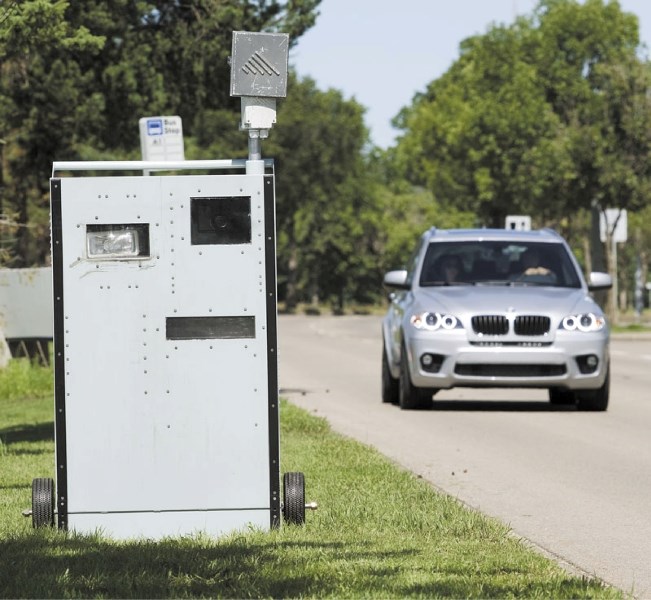A provincial cabinet minister is concerned about the way St. Albert and municipalities across the province are using photo radar.
Minister of Employment and Immigration Thomas Lukaszuk first raised the concern on Twitter earlier this week. He said he feels photo radar units are swelling all over the province and he wonders how much it is still a safety concern.
“I am just wondering if this is not just becoming the easy way of raising revenues,” he said. “I want to make sure that the usage of photo radar is reflective of safety considerations and safety considerations only.”
Lukaszuk, a St. Albert resident, said that, in his travels across the province, he also doesn’t think any community uses photo radar to the extent St. Albert does.
“Intuitively, I find that the usage of photo radar in St. Albert to be more prolific than anywhere else in the province.”
Lukaszuk did admit that he doesn’t have any specific numbers on usage in the city, but it is based on his observations.
He said those thoughts came to the forefront recently when he noticed the city’s newest portable photo radar box that recently began to appear on city streets.
He said he has always struggled with the notion photo radar is about safety.
“I have never bought into the argument that it is for safety. I think that it is a cash cow and I think we should be frank about it.”
Lukaszuk said if cities use photo radar strictly to raise revenue, that is fine, but then they should be direct about it and not pretend safety is the bigger motivator.
“If we are frank about it then it’s fine, as long as we admit to it.”
Lukaszuk said he mentioned the idea of reviewing the program to solicitor general Frank Oberle, but he has no idea if anything will come of it.
“I suggested it was something that residents of Alberta and St. Albert in particular would want to see happen. Are we using it appropriately and is it serving the purpose we intend?”
Mayor Nolan Crouse said the city’s photo radar program is not going anywhere on his watch and the program is about both raising revenue and slowing people down.
“This is about a combination of generating revenue and lowering speeds,” he said. “It is not one or another; it is a blend of both.”
Crouse said the program is important for the city’s coffers and getting rid of it would be tantamount to a two per cent tax increase.
According to numbers Crouse provided, the city brought in more than $1.4 million in revenue from photo enforcement in 2010, including vans and speed on green cameras.
The city also saw 126 injury collisions and, between 2005 and 2009, there were seven fatalities on city streets. Red Deer, Lethbridge, Grande Prairie and Medicine Hat all saw higher numbers of fatalities during that time.




